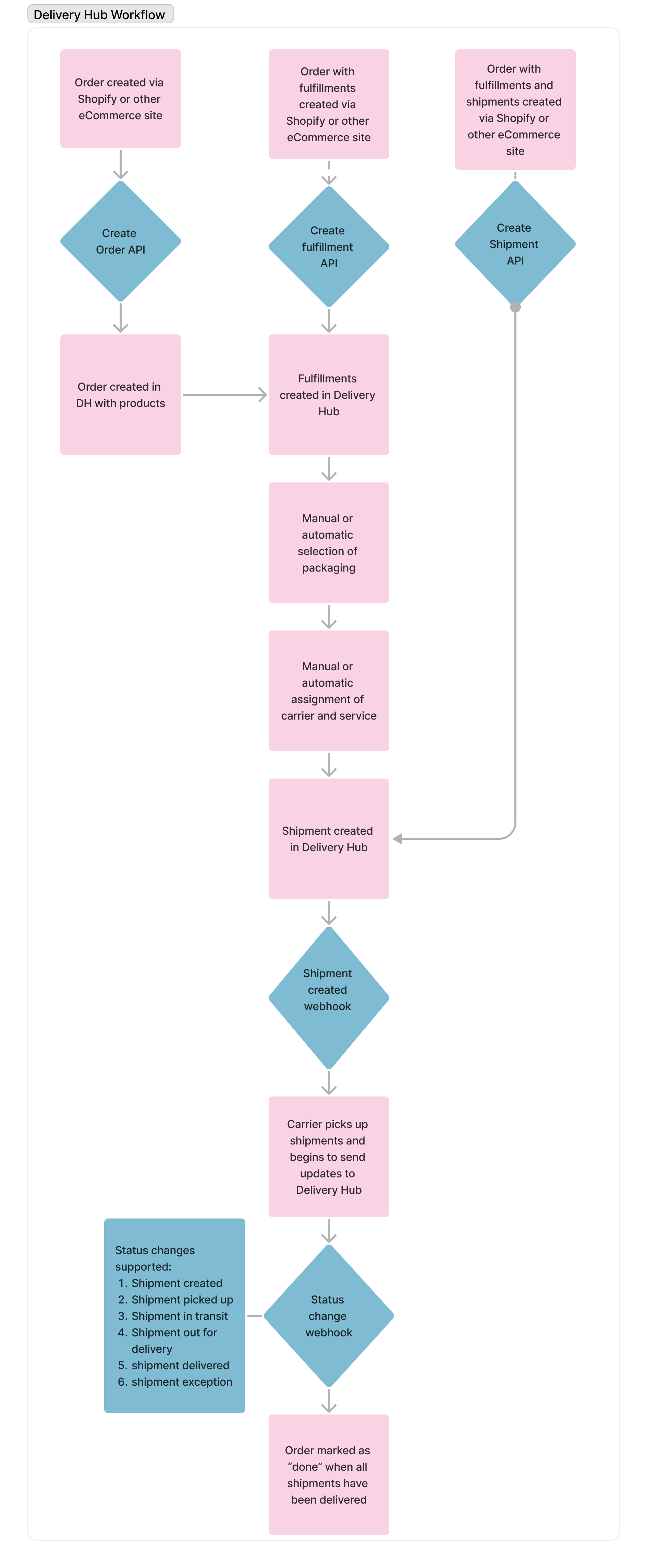Use Bringg's APIs to integrate Delivery Hub with your existing systems. Bringg's REST APIs enable you to send and receive order, fulfillment, and shipment data between Bringg's software and any other system that supports APIs.
Delivery Hub's data structure
An order is a request to fulfill goods and services at a specific address. It includes all information needed to complete it, such as the requested service or goods, the customer’s contact information, required services (such as fragile care), and the time window.
One order can include several fulfillments that Delivery Hub displays only in the shipping location where a packer will fulfill one part of the order. Where supported, the division of orders into fulfillments occurs in your OMS when the inventory for an order is available at different shipping locations. Fulfillments include the list of inventory for that location and requested service levels.
Each fulfillment can contain several shipments, which are created when some of the inventory is unavailable to leave with the first shipment. Shipments are sometimes referred to as consignments outside of Bringg.
One shipment can include multiple packages. A package refers to the physical goods shipped, including packaging and inventory. You might hear packages referred to as parcels outside of Bringg.

Next steps
Our documentation will walk you through the authentication and integration process so you can get started quickly. We aim to create documentation that enables all users to use our technology. If you are new to APIs, get started by reading our article about API Terminology. If you're already a pro, get started by authenticating your payloads.
To learn more about the capabilities of Bringg's Own Fleet and Delivery Hub software, visit our Knowledge Base.
A deeper look at Delivery Hub's data flow
